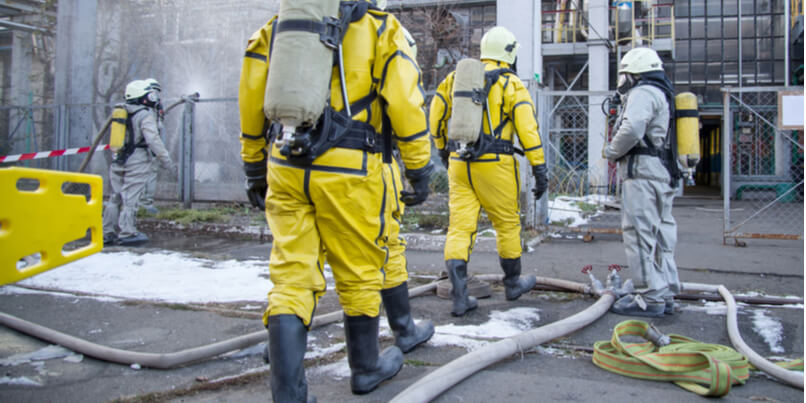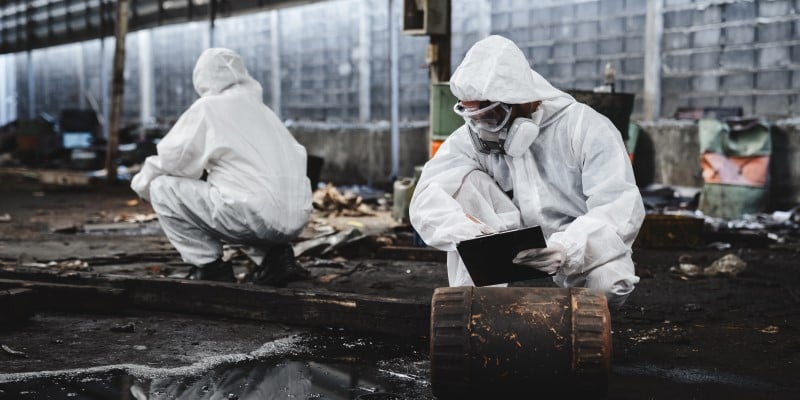 Developing, maintaining and testing the effectiveness of emergency preparedness and response (EPR) is a vital means of safeguarding personnel, the public and the environment in the event of a radiological incident.
Developing, maintaining and testing the effectiveness of emergency preparedness and response (EPR) is a vital means of safeguarding personnel, the public and the environment in the event of a radiological incident.
While regulatory controls, standardised procedures and radiation safety audits are key to minimising the likelihood of radiological accidents, there is always the risk of an unforeseen event or some form of illicit activity that may have serious radiological consequences.
Even for the most highly trained and experienced first response personnel, the prospect of being required to attend any form of radiological emergency can evoke some degree of fear or doubt.
However by acknowledging and understanding the nature of the hazard, by observing standard precautions and by taking part in frequent training exercises, first responders can feel better prepared to handle the challenges that they may encounter.
Protecting personal safety
The International Atomic Energy Agency (IAEA) advises adhering to the principles of ALARA (As Low As Reasonably Achievable) when responding to any radiological incident.
Key recommendations include:
- Avoiding touching or coming into contact with any items that are suspected to be radioactive
- Performing only safety-critical or life-saving tasks within the location of a potentially dangerous radioactive source
- Making use of available respiratory protection equipment if coming within 100 metres of a fire or explosion that involves a suspected radioactive source,
- Restricting eating, drinking, smoking or touching one's eyes, nose or mouth to avoid the risk of ingestion of a radioactive material
Understanding the nature of the hazard
Radiation sources are used in a wide variety of environments - be it for medical research, radiation oncology, industrial radiography, construction, food sterilisation or the manufacture of consumer goods.
Consequently, the variety of scenarios in which radiological events can potentially take place is hugely diverse - whether a small-scale incident in the context of a laboratory or hospital, an accident involving the transportation of radiological materials or a larger-scale emergency involving the deliberate use of a radiological dispersal device (RDD).
The effects of radiation exposure on the human body can vary dramatically depending on the dose.
Less than 50,000 mR for example is unlikely to result in any symptoms, while a dose of between 100,000 mR and 200,000 mR may lead to symptoms of nausea, vomiting or diarrhoea with hours of exposure.
A dose of 200,000 mR will be lethal in 5% of cases within a 60 day period, while a dose of 450,000 mR will be lethal for 50% of those people exposed within 60 days. In the majority of cases, any dose in excess of 600,000 mR is likely to be fatal.
Dose on its own however is not the only determining factor in how a body's cells may be affected by exposure to ionising radiation.
It is also important to consider the type of radiation (medical, industrial, alpha, beta, gamma) and the age, cell sensitivity and state of health of the individual exposed.
Taking part in realistic training exercises
Accidents involving radiological materials can and do happen - and when they do, a coordinated and well-honed emergency response is one of the most effective lines of defence.
A common challenge in many radiological incident situations is to efficiently coordinate an effective multi-disciplinary effort that could well involve the participation of first responders, medical teams, radiation specialists and other qualified personnel.
Realistic radiological field exercises can provide a valuable training ground in which to test preparedness and response to radiological emergencies, to identify critical strengths and weaknesses in response capabilities and to explore new ideas for emergency response.
Furthermore, participation in simulated radiological emergency exercises and response drills can provide vital opportunities for monitoring crews to put their radiation measurement tools and sample collection skills to the test.
The provision of realistic training opportunities can play an invaluable role in honing the skills of a wide range of practitioners and professionals within the world of radiological and nuclear EPR - be they emergency first responders, medical specialists, laboratory staff, radiation protection officers, emergency response coordinators or emergency planners.
Crucially, too, a successful exercise may not necessarily be one where everything goes "well" or "according to plan", but rather one where there is the opportunity for useful lessons to be learned.







